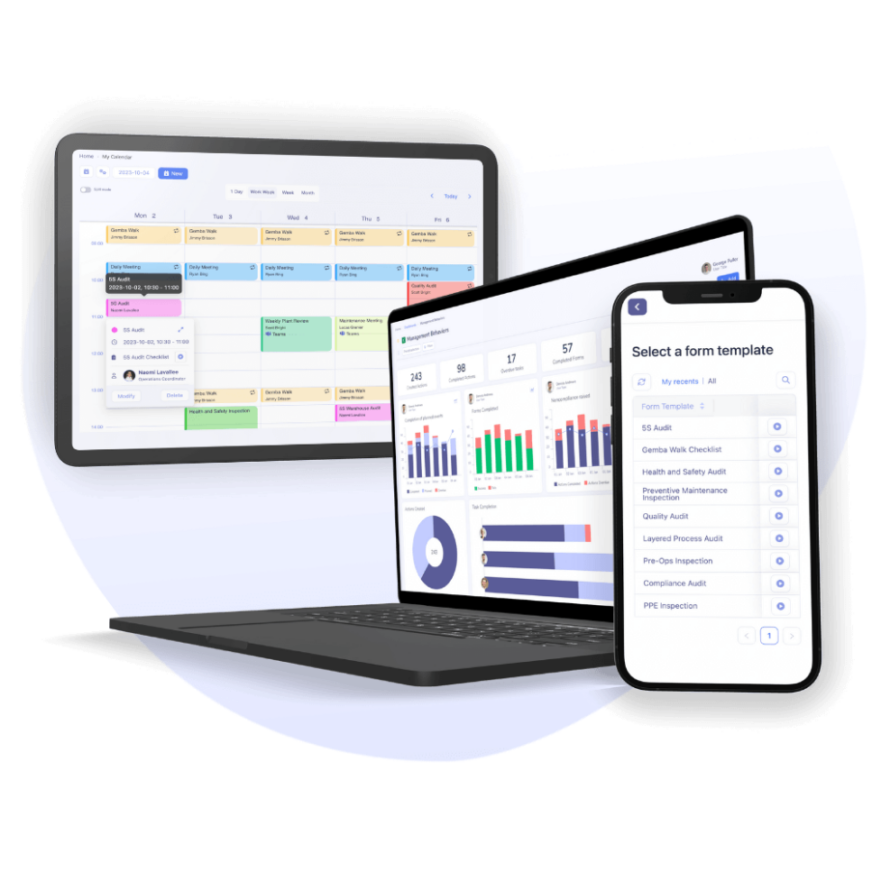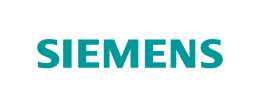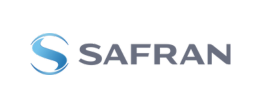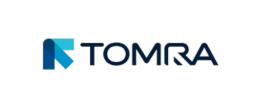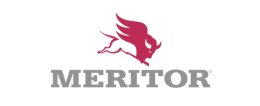Five steps, one system: 5S is a must for any worksite to organize and optimize its operations. It reduces daily inefficiencies, improves workplace safety, and minimizes time, movement, and resource waste. Over time, though, a 5S audit must come into play to prevent standards from going wayward.
The question then is, how can one conduct these audits effectively? Here, a digital tool like Tervene becomes invaluable to offer a streamlined, tech-driven approach and conduct thorough audits.
Why Conduct a 5S Audit?
The idea is to consistently review processes to ensure the 5S method is followed correctly. This way, we keep our work environment up to par and fully benefit from the 5S approach.
How Often Should We Do 5S Audits?
Here’s the rundown:
When Setting up Your 5S Workstation
An initial audit is vital once you’ve got your 5S area up and running. This preliminary step helps you see how well everyone’s sticking to the plan.
After the 5S Area Is in Action
It’s wise to schedule regular audits, like weekly or monthly, to ensure our teams keep up with the established 5S standards.
When Significant Changes Happen
As a rule of thumb, run an audit if there are significant shifts in the workplace, like new processes, equipment, or workstations. This update checks how well these recent changes fit the 5S principles.
Before Formal Inspections or Quality Control
5S audits are ideal prep steps for standard inspections or quality reviews. They help make sure everything’s up to the mark.

Checklists: Cornerstones of Successful 5S Audits
When it comes to 5S audits, checklists are fundamental. They guide you through the process to ensure that every little detail is covered for optimal workspace organization. It’s a practical approach to keep everything running smoothly and significantly supports your team’s well-being. It’s all about staying organized and efficient – a simple yet effective strategy.
5S audit checklists assess the implementation and conformity of the overarching methodology: Sort, Set in Order, Shine, Standardize, and Sustain.
Here are some sample questions for your 5S checklists:
1. Sort (Seiri)
The first pillar of the 5S project involves identifying excessive elements and creating an ergonomic work environment. Among the questions that may arise, here are a few:
- Have unnecessary items in your workspace been removed?
- Do drawers and storage areas contain only essential items?
- Are all documents stored in the workspace necessary?
- Has excess stock in storage areas been reduced?
- Is the floor clear of unwanted accessories or equipment that might cause accidents?
- Are items in the workspace well-organized and clearly labeled?
- Is there a routine in place for identifying and removing items that are no longer needed?
2. Set in Order (Seiton)
This second step aims to intuitively organize the workspace to minimize movements and quickly provide access to the most frequently used objects and machines.
Several questions are, therefore, relevant in the context of a 5S audit:
- Are tools, materials, and equipment arranged for an efficient workflow?
- Are there clearly defined locations for all items?
- Are labels and signage used to indicate storage locations?
- Have clear procedures for storage been established, including documentation on specific locations for each item?
- Has a visual system (such as labels, symbols, and drawings) been implemented to facilitate the storage of tools and equipment?
- Does each tool have a dedicated place, and are frequently used items easily accessible?
- Does the storage of tools follow a logical order based on their use in processes?
- Are there occurrences of time loss during the search for materials or documents?
3. Shine (Seiso)
Once you complete the storage analysis, you need to inspect cleanliness. If you have implemented the 5S methodology well, all these questions should receive affirmative answers.
- Is the workspace clean, including the floor, work surface, and shelves?
- Is maintenance of machines and equipment carried out up-to-date by the planned schedule?
- Are wastes managed appropriately, either by disposal or recycling?
- Are tools and equipment properly maintained and cleaned?
4. Standardize (Seiketsu)
The 5S audit also allows for verifying that the standardization is not failing. It is possible to ask:
- Are regular 5S audits conducted at each workstation to ensure compliance with standards?
- Have employees received adequate training on 5S standards?
- Are standard operating procedures (SOPs) in place and readily accessible?
- Are there visual standards for organization and cleanliness?
5. Sustain (Shitsuke)
Follow-up is crucial to ensure that the 5S processes are respected. Several questions have their place in an audit to carry out this analysis effectively:
- Are all employees consistently following the established rules of the 5S program?
- Have measurable improvements in workplace performance been observed since the implementation of the 5S methodology?
- Are new team members receiving comprehensive training on the principles of 5S to integrate them effectively into the system?
- Are regular meetings organized to discuss and analyze the results and benefits of applying the 5S practices?
- Are designated teams responsible for maintaining and enforcing the 5S standards in different areas or departments?
- Is a program or system in place to acknowledge and reward employees who actively contribute to the 5S process?
- Are before-and-after pictures or other visual tools used to illustrate the tangible successes and improvements achieved through 5S?
- Is there an ongoing process for the periodic review and reinforcement of 5S principles to keep them at the forefront of operational practices?
Indeed, one can customize the set of questions for 5S audits to align with each factory’s specific processes and needs.
Tervene offers comprehensive solutions for 5S audits.
5S Audits with Tervene
While using a paper-based 5S checklist for audits is possible, this method can lead to variable results depending on the auditor and risks of lost information. On the other hand, digital tools prove to be much more efficient and comprehensive.
Among the benefits of an app like Tervene, we can highlight:
- Quick creation of your 5S checklists on-site;
- Time-saving that allows for more frequent audits;
- Reduction in data loss;
- Centralization of information for easy access;
- Automatic generation of customized dashboards;
- Automated sending of reminders, alerts, and notifications;
- Real-time tracking of improvements made and emerging issues;
5S audits ensure maximum compliance with the standards set during 5S projects. They rely on various forms and indicators to continuously improve practices in the factory. While paper-based inspections have been popular for a long time, apps now show many advantages. For saving time, not missing any flaws, and centralizing data, Tervene indeed stands out as a strong ally. Ask for your demo.

